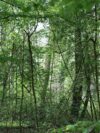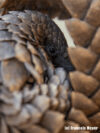African Vultures
Vultures are an important component in many wild and urban ecosystems due to their special food niche. In general, a distinction can be made between New World and Old World vultures The former live exclusively in North and South America, while the latter inhabit Asia, Europe, and Africa. There are 23 species of vultures and condors worldwide, of which more than 68% are currently categorized with an endangered status in the IUCN Red List (The IUCN Red List of Threatened Species, 21-2).
African Vultures – Profile
Species:
- White-backed Vulture (Gyps africanus),
- Griffon Vulture (Gyps fulvus),
- Cinereous vulture, (Aegypius monachus),
- White-headed Vulture (Trigonoceps occipitalis),
- Hooded Vulture (Necrosyrtes monachus),
- Lappet-faced Vulture (Torgos tracheliotos),
- Bearded Vulture (Gypaetus barbatus),
- Rüppell’s vulture (Gyps rueppellii),
- Palm-nut Vulture (Gypohierax angolensis),
- Egyptian Vulture (Neophron percnopterus),
- Cape Vulture (Gyps coprotheres)
- Weight: 8-15 kg*
- Food: carrion (small to larger mammals, birds, reptiles)*
- Number of offspring: 1-2 per year*
- Life expectancy: 25-40 years*
- Range: large parts of Africa
- Habitat: mostly steppe or semi-desert*
- Main threats: Poisoning, infrastructure, belief-based trade and hunting, habitat loss,
*varies by species
Vulnerability status, threats, and protection
Eleven species of vulture live in Africa: White-backed Vulture (Gyps africanus), Griffon Vulture (Gyps fulvus), Cinereous vulture, (Aegypius monachus), White-headed Vulture (Trigonoceps occipitalis), Hooded Vulture (Necrosyrtes monachus), Lappet-faced Vulture (Torgos tracheliotos), Bearded Vulture (Gypaetus barbatus), Rüppell’s vulture (Gyps rueppellii), Palm-nut Vulture (Gypohierax angolensis), Egyptian Vulture (Neophron percnopterus), Cape Vulture (Gyps coprotheres).
According to the IUCN Red List, 44% of African vulture species are already threatened with extinction. The causes of this enormous population decline are diverse, but four main reasons can be highlighted on the basis of scientific studies.
Based on their research, Ogada et al. (2016) assume the following causes:
Poisonings, both intentional (through poachers who want to prevent animal carcasses from being discovered by vultures circling in the sky) and unintentional (for example through poisoned animal carcasses intended to be used against livestock predators) were by far among the most devastating, accounting for 61% of all causes of death. Usually, highly toxic agricultural pesticides are used for this purpose, which are legally obtainable for growing cotton (Murn and Botha, 2017).
Belief-based Trade: Trade, consumption, and distribution of traditional medicines were the second highest cause of vulture deaths, accounting for 29%. At wildlife markets in West and Central Africa, 22% of all bird species on offer had IUCN Red List endangerment status. In particular, Hooded Vultures and Palm-nut Vultures were offered in higher numbers (Buji et al., 2016). In some areas, vultures are believed to have magical powers and the ability to see into the future.
Electrical Infrastructure: As a result of energy infrastructures such as power lines or wind turbines, 9% of all vultures died from electrocution or collisions.
Hunting: Hunting, with subsequent consumption of vulture meat, was responsible for 1% of the causes of death.
Other threats: In addition, factors such as habitat loss and decreasing food availability contribute significantly to the problem. However, it should be borne in mind that the significance of all these causes differs in each region (Bamford, Monadjem and Hardy, 2009).
Challenges and Opportunities
In many countries, important baseline information is lacking to gauge the progress of the decline of the respective vulture populations. Without a sound database, both on vulture populations and on ethnobiological issues such as healing, it is difficult to initiate effective conservation measures. One such country is Zambia. Although over 30% of the land is protected in the form of national parks (8%) and other protected areas (GMAS, 22%) in total, and the population density is comparatively low at 42 people/km², the country continues to face severe population declines.
Since 1990, poisoning incidents have been repeatedly reported in Zambia (Roxburgh and McDougall, 2012). In 2020, for example, over 800 vultures (white-backed vultures, woolly vultures, crested vultures and eared vultures) died from feeding on a poisoned elephant carcass. This incident is one of the most severe vulture poisonings ever recorded in the whole of southern Africa.
The human-wildlife conflict is the primary reason for the declining numbers. As agriculture becomes more intensified, humans are increasingly encroaching wild landscapes. An even worse problem is, that the access to toxic pesticides on the market is getting easier, which increases the potential for poisoning events.
Four Zambian vulture species in focus
In the following section, four African vulture species that occur in Zambia are presented in more detail. These include:
- White-backed Vulture, Critically Endangered, with a total population of 270,000 individuals (IUCN 2018),
- Hooded vulture, Critically Endangered, with a total population of 197,000 individuals (IUCN 2016).
- White-headed Vulture, Critically Endangered, with a total population of 2,500 – 9,999 individuals (IUCN 2016).
- Lappet-faced vulture, Critically Endangered, with a total population of 5,700 individuals (IUCN 2016).
The white-backed vulture is considered endangered despite a population of over a quarter of a million individuals. Similar to the White-headed Vulture and Lappet-faced Vulture, it is also extremely vulnerable to human disturbances, such as roads (Chomba and M’Simuko, 2021; Murn et al., 2016). In contrast, Hooded Vultures occur in larger numbers, especially in areas with high human densities (Henriques et al., 2018).
The reproduction rate of all four vulture species is very low. Normally all species lay one egg per year, only in rare cases a second one may be laid by Capped or Lappet vultures (Gibson, 2012).
Vulture Conservation
Botha, Ogada and Virani (2012) propose the following approach to vulture conservation:
Effective regulation in the import, production, sale, and use of toxins, especially agricultural chemicals (pesticides) and pharmaceutical products, which can have lethal consequences for vultures.
Stricter legislation and prosecution against poisoning offenders and persons who illegally trade in vultures and/or their body parts
Ensuring adequate protection and management measures for vultures and their breeding grounds
Vulture-friendly design of new energy infrastructure and corresponding adaptation of existing infrastructure
Support research, capacity building and outreach programmes for the conservation and survival of healthy vulture populations
These goals require close cooperation between governments, non-governmental organisations and scientists at both national and international levels to adapt existing laws and regulations and reduce illicit trade (Henriques et al., 2018).




